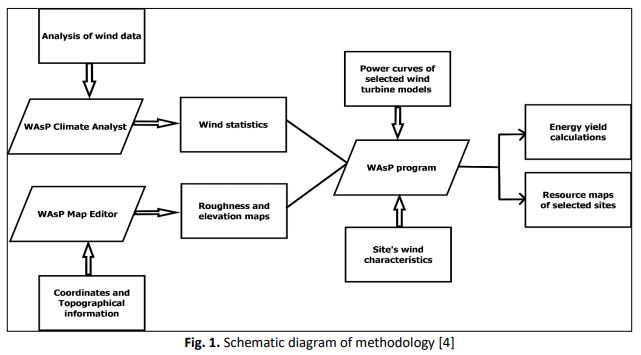A Comparative Study of Wind Characteristics Between South-Western and South-Eastern Thailand Using Different Wind Turbine Models
DOI:
https://doi.org/10.37934/arfmts.92.1.149161Keywords:
Wind energy potential, Wind characteristics, Wind turbine model, WAsP, ThailandAbstract
Globally, wind energy has proven to be one of the most sustainable sources of energy. Wind energy assessment plays a critical role on determining installation of wind turbines worldwide. This work presents the technical evaluation of wind energy potential using three available wind turbine models for prospective onshore wind farm in the southern Thailand at Krabi and Songkhla sites. Ten-minute interval wind data over a period of 3 to 4 years obtained from Weather Observing Station is utilized to observe the diurnal and monthly wind speed, as well as frequency distribution. WAsP program is applied for energy yield calculations and wind resource maps. Our results reveal that Krabi and Songkhla has the highest mean wind speed of 4.39 m/s in December and 3.91 m/s in February, respectively. The prevailing wind direction in Krabi and Songkhla are north-east and south-east, respectively. WAsP analyses show that the total net AEP for Krabi is 7163.782 MWh, 7762 MWh and 12731 MWh using 275 kW, 300 kW and 500 kW wind turbine models, respectively. Similarly, the total net AEP for Songkhla is 7116.63 MWh, 7775.245 MWh and 12390 MWh using 275 kW, 300 kW and 500 kW wind turbine models, respectively. The total capacity factor for Songkhla and Krabi is 29.1% and 28.3%, respectively. Our results indicate that Enercon E-40/5.40 500 kW wind turbine model produces the highest total gross AEP and total net AEP for Krabi and Songkhla sites. Besides, the Vergnet GEV MP-C 275 kW turbine model shows slightly higher capacity factor in case of both sites. The findings of this study reflect that small to medium size wind turbines can be utilized to generate electricity at the sites.
Downloads
































